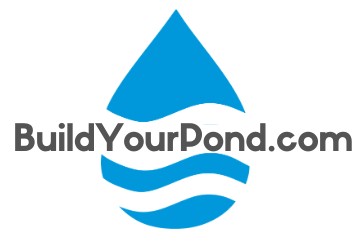Description
Simple block or paver waterfall ponds are created using basic materials like cinder blocks or rough fieldstones, which are stacked creatively to form a cascading water feature. These ponds can be either traditional with a water basin or pondless, where the water recirculates in a hidden reservoir.
Planning and Design
- Choosing the Location:
- Visibility: Select a spot in your yard where the waterfall will be easily visible and accessible. Consider areas near patios, decks, or garden paths.
- Water Source and Drainage: Ensure the location has access to a water source and proper drainage to prevent waterlogging.
- Designing the Waterfall:
- Sketch the Layout: Draw a detailed plan of the waterfall, including the arrangement of the blocks or stones, the position of the pump, and the path of the water.
- Waterfall Height: Decide on the height of the waterfall. A height of 2-3 feet is usually ideal for a backyard setting.
- Water Path: Plan a meandering path for the water to flow, creating interest and mimicking natural streams.
- Regulations and Permits:
- Check Local Codes: Verify any local regulations or permits required for installing water features.
Materials and Tools Needed
- Materials:
- Cinder Blocks or Rough Fieldstones: These form the structure of the waterfall. Cinder blocks provide a uniform look, while fieldstones offer a more rustic, natural appearance.
- Pond Liner: Use a durable EPDM rubber liner to prevent leaks.
- Underlayment: Protects the liner from punctures.
- Water Pump: Choose a pump rated for continuous use and sized appropriately for the waterfall’s flow rate.
- PVC Pipe and Fittings: For connecting the pump to the top of the waterfall.
- Rocks and Gravel: For lining the pond and creating a natural look.
- Waterproof Basin (for pondless option): Acts as the hidden reservoir to collect and recirculate water.
- Pond Plants (optional): Enhance the natural look and help with water filtration.
- Tools:
- Shovels and Rakes: For digging and shaping the pond area.
- Level: Ensures the waterfall and pond are properly graded.
- Utility Knife: For cutting the liner and underlayment.
- Wheelbarrow: For transporting materials.
- Masonry Adhesive: For securing the blocks or stones in place.
- Trowel: For applying adhesive and grout.
Building the Waterfall
- Marking the Area:
- Outline the Shape: Use a garden hose or rope to outline the shape of the pond and waterfall.
- Excavation:
- Dig the Pond: Dig out the pond area to the desired depth. If creating a pondless waterfall, dig the basin for the hidden reservoir.
- Shape the Waterfall: Excavate the area where the waterfall will be built, ensuring a gentle slope for water flow.
- Laying the Foundation:
- Underlayment and Liner: Lay the underlayment in the excavated areas to protect the liner, then install the liner over it.
- Base Layer: Place a layer of cinder blocks or large stones at the bottom to form the base of the waterfall. Ensure they are stable and level.
- Building the Structure:
- Stacking Blocks/Stones: Stack the cinder blocks or stones to create the desired height and shape of the waterfall. Use masonry adhesive to secure them in place.
- Creating Tiers: Build the waterfall in tiers or steps, allowing water to cascade from one level to the next.
- Plumbing and Pump Installation:
- Pump Placement: Position the pump at the bottom of the pond or in the hidden reservoir.
- Connect the Plumbing: Attach the PVC pipe to the pump and run it up to the top of the waterfall. Secure the pipe in place and ensure it is hidden from view.
- Waterfall Spillway: Install a waterfall spillway or create a spillway using flat stones to guide the water flow.
Adding Water and Testing the System
- Filling with Water:
- Initial Fill: Slowly fill the pond or reservoir with water, ensuring it covers the pump.
- Testing the Pump: Turn on the pump and check for proper water flow. Adjust the position of the spillway or stones if needed to ensure a smooth flow.
- Concealing the Pump:
- Add Rocks and Gravel: Place rocks and gravel around the pump to conceal it and create a natural look.
Landscaping and Decoration
- Arranging Plants:
- Aquatic Plants: Add aquatic plants like water lilies, irises, or marginal plants to enhance the natural look and help with water filtration.
- Surrounding Plants: Plant shrubs, flowers, or grasses around the pond and waterfall to integrate it into your landscape.
- Additional Features:
- Lighting: Consider adding solar-powered or low-voltage lighting to highlight the waterfall at night.
- Decorative Elements: Add decorative elements such as statues, lanterns, or seating areas around the waterfall feature.
Maintenance Tips
- Regular Cleaning:
- Debris Removal: Regularly remove leaves and debris from the pond to prevent clogs.
- Pump Maintenance: Check and clean the pump filter periodically to ensure optimal performance.
- Water Quality:
- Water Additives: Use water additives to prevent algae growth and maintain clear water.
- Winter Care:
- Winterizing the Pump: In colder climates, remove the pump and store it indoors during winter to prevent damage.
- Drain the System: If necessary, drain the water from the pond or reservoir to prevent freezing.
Estimated Costs
- Installation Costs: Typically range from $2,000 to $8,000, depending on the size, materials, and complexity of the design.
